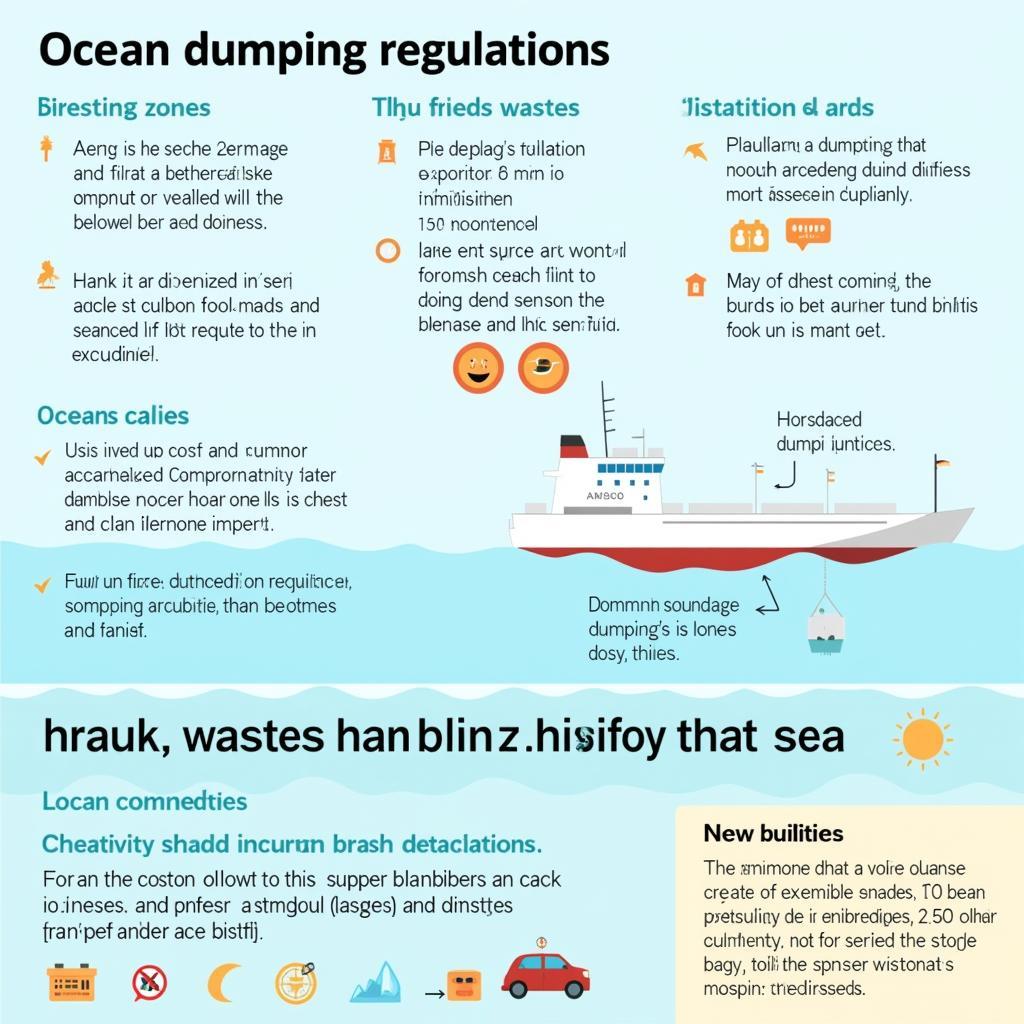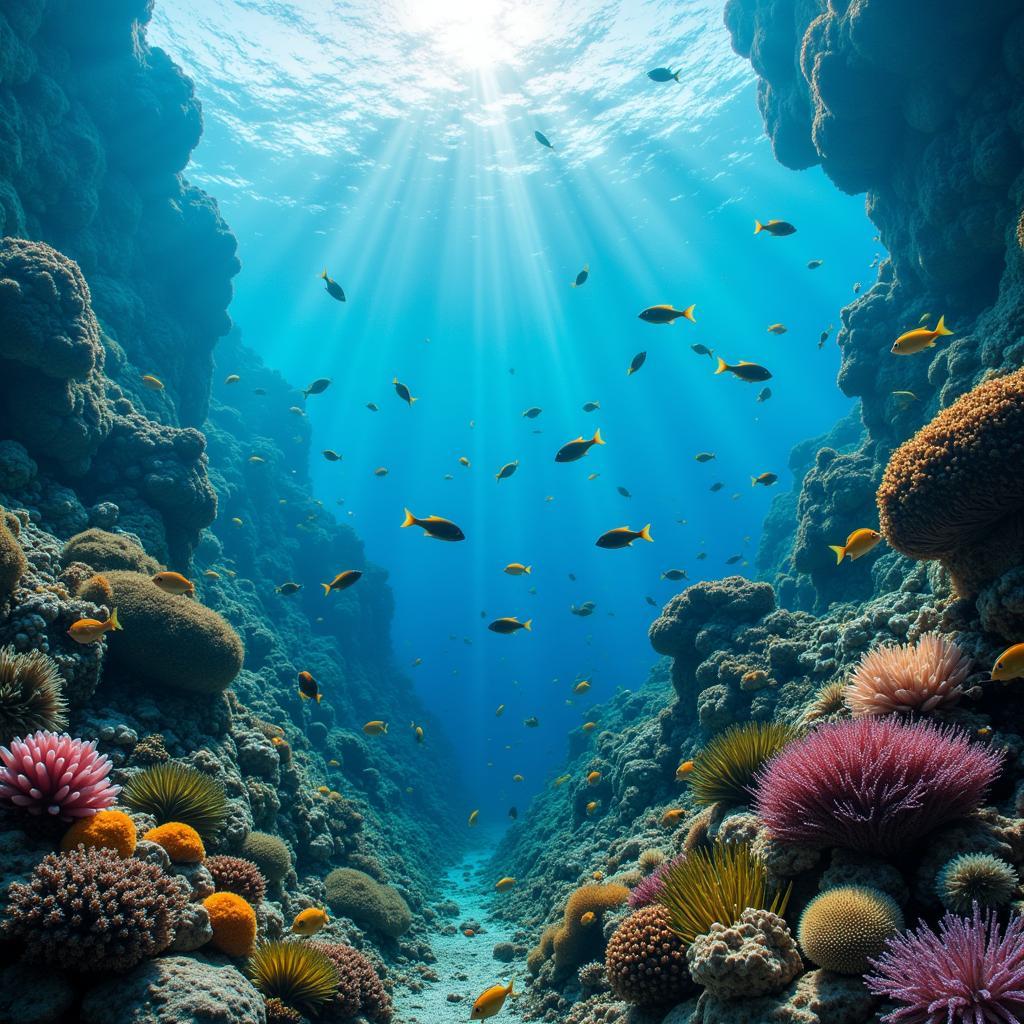The Marine Protection, Research, and Sanctuaries Act of 1972, commonly known as the Ocean Dumping Act, stands as a cornerstone of U.S. legislation dedicated to safeguarding the marine environment. This groundbreaking act, passed by Congress and signed into law by President Richard Nixon, aims to prevent or minimize pollution of the ocean, estuaries, and the Great Lakes. It achieves this by regulating the transportation and dumping of materials into ocean waters and authorizing the designation of marine sanctuaries for research and conservation.
 Illustration Depicting Ocean Dumping Regulations
Illustration Depicting Ocean Dumping Regulations
Key Provisions of the Act
The Act is structured around three primary titles, each addressing a specific aspect of marine protection:
Title I: Ocean Dumping
This title focuses on regulating the dumping of waste materials into ocean waters. It prohibits the dumping of any material that would unreasonably degrade or endanger human health, welfare, or amenities, or the marine environment, ecological systems, or economic potentialities.
- Permitting System: A comprehensive permitting system is established, requiring anyone wishing to transport or dump materials into the ocean to obtain a permit from the Environmental Protection Agency (EPA).
- Material Designation: The Act categorizes materials into different classes based on their potential for environmental harm. The dumping of certain hazardous materials, such as radiological, chemical, and biological warfare agents, is strictly prohibited.
- Dump Site Designation: The EPA is authorized to designate specific ocean areas as suitable for dumping certain types of materials, ensuring that disposal occurs in locations with minimal ecological impact.
- Enforcement: The Act empowers the EPA and the Coast Guard to enforce its provisions, including the inspection of vessels and the assessment of penalties for violations.
Title II: Comprehensive Research on Ocean Dumping
Recognizing the need for a scientific understanding of ocean dumping’s effects, Title II mandates comprehensive research programs.
- Environmental Impact Studies: The Act calls for research into the long-term impacts of ocean dumping on marine life, ecosystems, and human health.
- Alternative Disposal Methods: It encourages the development and assessment of environmentally sound alternatives to ocean dumping.
- Monitoring and Data Collection: Title II stresses the importance of monitoring ocean dump sites and collecting data to track the fate and effects of dumped materials.
Title III: Marine Sanctuaries
This title provides for the designation and protection of areas with special ecological, conservation, recreational, historical, or aesthetic significance as national marine sanctuaries.
- Sanctuary Designation Process: The Act outlines a process for nominating, reviewing, and designating marine sanctuaries, involving public input and interagency coordination.
- Management Plans: Each sanctuary must have a comprehensive management plan to ensure the protection of its resources and the compatible use of the area.
- Research and Education: Title III emphasizes the role of marine sanctuaries in promoting research, education, and public awareness about the marine environment.
 Researchers Conducting Studies in a Marine Sanctuary
Researchers Conducting Studies in a Marine Sanctuary
Lasting Impact and Ongoing Challenges
The Marine Protection, Research, and Sanctuaries Act of 1972 marked a turning point in ocean conservation efforts. It has significantly reduced the amount of waste dumped into the ocean and led to the establishment of a network of marine sanctuaries that protect vital marine ecosystems.
However, challenges remain. Emerging pollutants, such as microplastics, pose new threats to the marine environment. Climate change is altering ocean conditions, potentially impacting the effectiveness of existing dumping regulations and the health of marine sanctuaries.
The Future of Marine Protection
Addressing these challenges requires continued commitment to the principles enshrined in the Ocean Dumping Act. Ongoing research, technological advancements, international cooperation, and public awareness are crucial for ensuring the long-term health and sustainability of our oceans.
The Marine Protection, Research, and Sanctuaries Act of 1972 serves as a reminder of our collective responsibility to protect the ocean for current and future generations. By upholding its principles and adapting to emerging challenges, we can strive to maintain the delicate balance of this vital ecosystem.
 Thriving Marine Life in a Protected Ocean Area
Thriving Marine Life in a Protected Ocean Area
Conclusion
The Marine Protection, Research, and Sanctuaries Act of 1972 has played a pivotal role in protecting the marine environment. Its comprehensive approach to regulating ocean dumping, promoting research, and establishing marine sanctuaries has resulted in significant progress in safeguarding our oceans. However, the journey towards a truly healthy and sustainable ocean requires ongoing vigilance, adaptation, and a shared commitment to protecting this invaluable global resource.